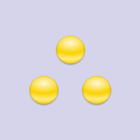
Polystyrene is an aromatic polymer that consist of a linear hydrocarbon chain with a benzene ring attached to every second carbon atom. Particles coated with polystyrene have a hydrophobic surface. This surface also encourages a strong physical adsorption of molecular species with hydrophobic regions. Surfactants and protein molecules stick strongly by passive adsorption.
By coating particles with a polystyrene shell (typically 10–20 nm thick), the particles can be dispersed in a wide range of organic solvents. This is our preferred method of transferring larger (10 nm and greater) diameter particles into organic solvents and hydrophobic composites.
Advantages
- The density of polystyrene is relatively low (1.055 g/cm3 at 20°C)
- Refractive index of 1.59 at 590 nm
- Compatible with: benzene, chloroform, methylbenzene, methylene chloride (DCM), tetrahydrofuran (THF), dimethylformamide (DMF), ethyl acetate, xylene
- Not compatible with: acetone, hexane, butane, ethanol*, ether, methanol, phenol, propanol, water
Representative Source: Poly(styrene), thiol-terminated (Polymer Source, Inc., A-6.1.15.1.33.1)
Molecular weight: 50 kDa
*Note: polystyrene-coated particles flocculate in the presence of polar solvents like alcohols. Ethanol can be used to transfer the particles from one compatible solvent to another. For more information, see the solvent transfer protocol for polystyrene gold.
Comparison to Alternatives
- Hydrophobic
- Compatible with many polar organic solvents
Applications
- Integration into hydrophobic composites
- Particle suspension in polar solvents

